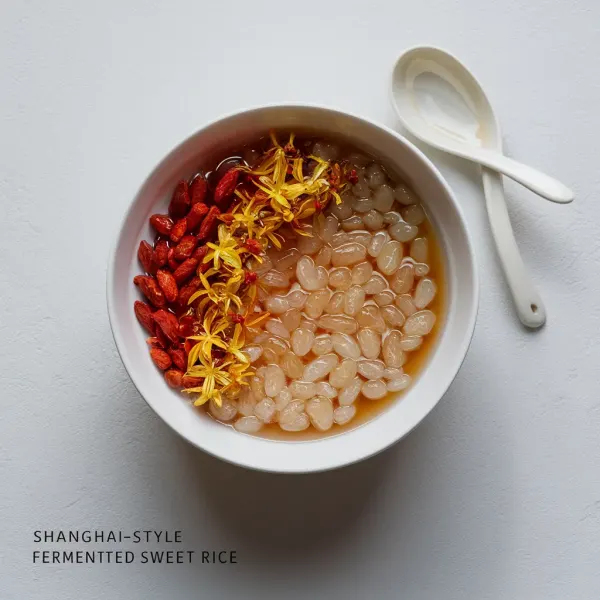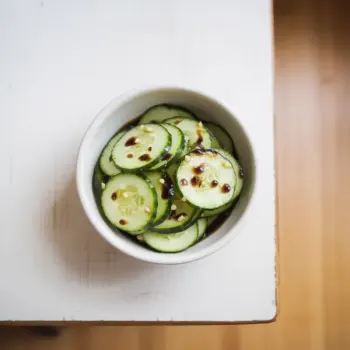
 24 minutes
24 minutesA traditional sweet rice dish from Shanghai, fermented to develop a unique flavor.


Glutinous Rice, washed
cups
cups
Wine Pill, crushed
each
1. Wash the Glutinous Rice
First, wash the glutinous rice. Place it in a large bowl and rub the grains between your palms. Discard the water and repeat this process three times until the water is clear. Drain the rice well, ensuring it's not too wet.
2. Steam the Rice
Next, steam the washed rice. Place the rice in an 8-inch cake pan and add 2 cups of cold water. Set up your steamer, cover it, and steam the rice for 30 to 40 minutes. You'll know the rice is ready when it appears glazed and translucent.
3. Sterilize the Jars
While the rice steams, sterilize three 20-ounce Mason jars to get them ready for storing the rice later.
4. Cool and Mix the Rice
Once the rice is steamed, let it cool to lukewarm, which is important to avoid killing the yeast. When the rice has cooled, mix it with 2.25 cups of room-temperature water and the crushed wine pill. Use your hand to mix thoroughly, ensuring the yeast is evenly distributed.
5. Fill and Ferment the Jars
Now, divide the rice mixture among the three sterilized jars. Use a wooden chopstick to push holes into the rice in each jar. These holes will help the fermentation process by allowing liquid to seep through and air to circulate. Cover the jars with plastic wrap and leave them to ferment at room temperature. Depending on the season, this can take anywhere from 24 to 72 hours. You'll know the fermentation is working when you see liquid in the holes and smell a sweet aroma.
6. Store the Fermented Rice
When the rice is fermented, replace the plastic wrap with screw tops and store the jars in the refrigerator to halt further fermentation. Enjoy your Shanghai-style fermented sweet rice chilled or at room temperature!
One common variation is to serve the fermented sweet rice warm with glutinous rice balls (Tangyuan), which can be either plain or filled with sweet fillings like black sesame or peanut paste. This dessert is especially popular during Chinese New Year.
For a simple yet satisfying dessert, combine the fermented rice with yogurt or sweetened condensed milk. The tang of the dairy complements the sweet alcohol notes of the rice.
For a modern twist, blend the fermented rice with a custard base to make ice cream. The result is a creamy dessert with a complex flavor profile that is sure to intrigue.
To subtly alter the flavor, consider infusing the rice with aromatic ingredients during the fermentation process. For instance, add a few pandan leaves, a stick of cinnamon, or some orange peel to the fermentation vessel. These will impart a fragrant note to the finished product.
Mix the fermented rice with a batter made from flour, eggs, and a bit of sugar to make pancakes. Serve them with fresh fruit or a drizzle of honey for a delightful breakfast or dessert.
Use high-quality glutinous rice for the best texture and flavor. Ensure proper rinsing and soaking for optimal hydration and fermentation.
Maintain a consistent temperature around 60-70°F to avoid slowing down or accelerating the fermentation unduly.
Utilize filtered water and pay attention to the water temperature when adding the rice wine yeast balls to promote effective fermentation.
Finely crush the Chinese rice wine yeast balls to ensure even distribution and better activation for a consistent fermentation process.
Ensure all equipment is well sanitized to prevent contamination and spoilage of your Jiuniang.




Comments (0)